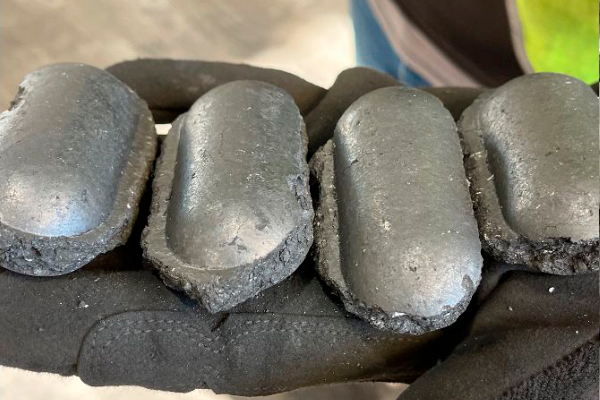Why Briquette?
Waste to Value. Cold and Clean.

Each year, millions of tons of valuable metal fines, dust, and sludge are discarded — either landfilled or lost through inefficient recycling methods. These byproducts, generated across cutting, grinding, milling, and smelting operations, represent not just environmental liabilities, but missed economic opportunities.
Briquetting changes the game.
By compressing fine metallic waste into high-density, furnace-ready briquettes, manufacturers can recover material that would otherwise be lost — reducing waste, increasing metal yield, and streamlining handling and logistics.
Traditional methods rely on binders like cement, lime, or molasses — materials that:
- Increase slag production and reduce furnace efficiency
- Introduce impurities that degrade melt quality
- Require thermal curing, adding time, complexity, and energy costs
At NAMS, we take a cleaner, smarter approach.
Our cold briquetting systems use engineered binder formulations that:
- Contain less than 10% binder content, reducing dilution of metal value
- Burn off cleanly during melting, leaving no slag-forming residues
- Enhance melting performance and metal recovery rates
The result is a briquette that performs as well as — or better than — virgin feedstock, without the drawbacks of traditional systems.
Cleaner metal.
Lower emissions.
More value.
Whether you’re recycling iron, aluminum, stainless steel, or other alloys, our process helps turn operational waste into a circular, cost-saving asset — with zero curing energy and zero compromise on quality.
